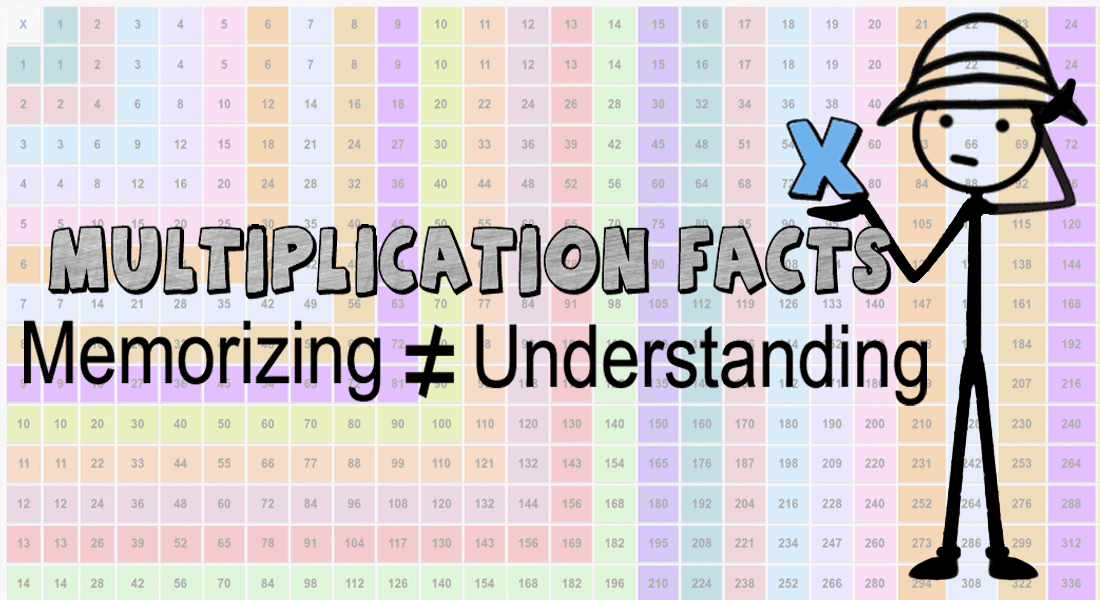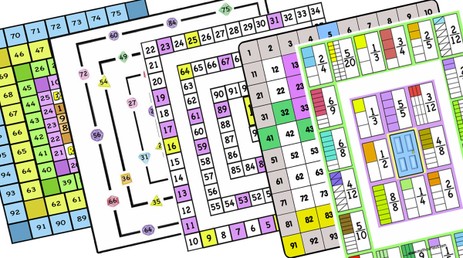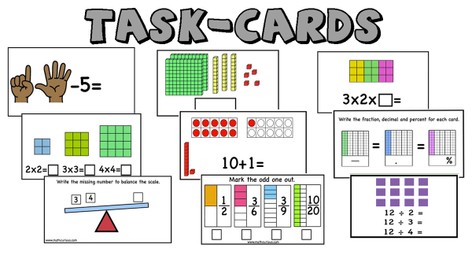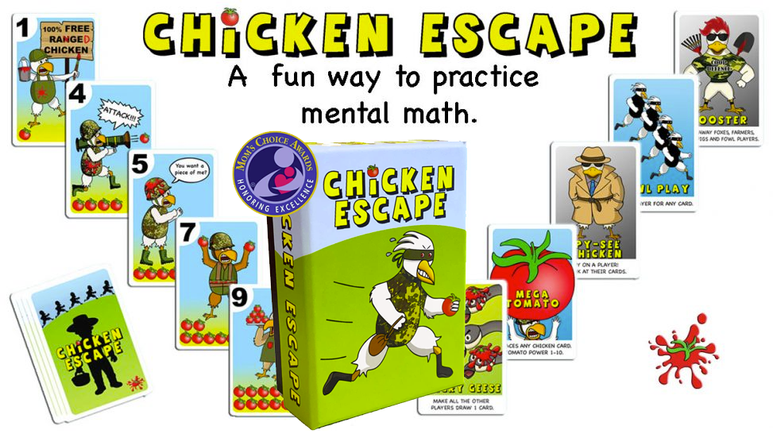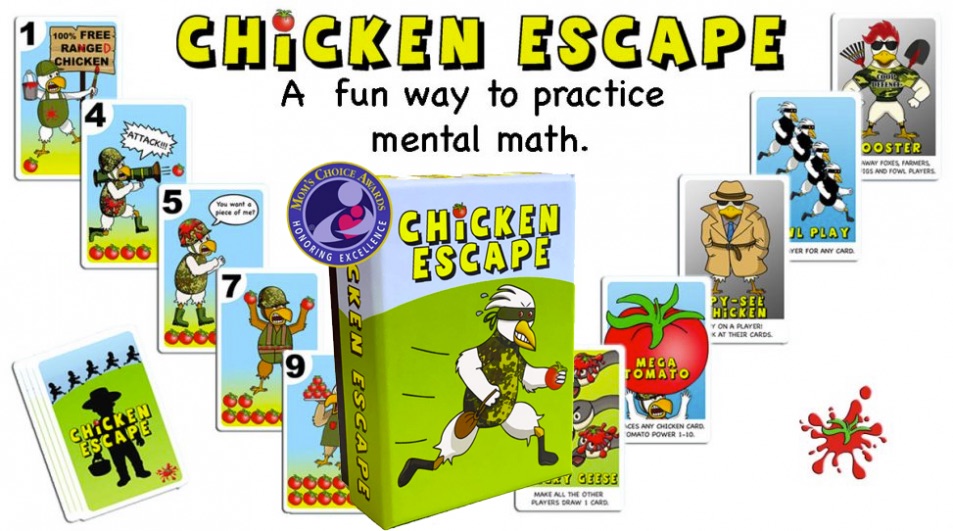When students struggle with multiplication facts, solving complicated problems (like for example finding common denominators to add fractions) becomes hard. When they use most of their working memory on simple calculations they have little mental space left for understanding new concepts.
Students start learning the multiplication facts in grade 3 although multiplication as repeated addition first appears in grade 2. Skip counting by 2 and counting in 5s and 10s are the first steps. It is important that the students master the multiplication tables by grade 4 and be ready to dive into math topics like multi-digit multiplication, equivalent fractions, and division. Of course, before starting with the multiplication facts it is necessary that the students first fully learn and understand addition and subtraction facts.
Parents and teachers often rush into drills to help children memorize the multiplication tables as quickly as possible. There is nothing wrong with memorization if it comes after learning and understanding. Automaticity that comes from endless repetition will not help in the long run. There is no need to rush into memorizing all the multiplication tables. Allow students to take their time and practice solving problems until they start memorizing without even realizing it. A great way to do that is by “playing” with the multiplication table.
Here are some steps you can follow.
1. Check students’ understanding
Make sure the children understand the concept of multiplication well. Provide visuals to make facts concrete. Use hands-on manipulatives and ask them to draw pictures and form arrays by arranging a set of objects into rows and columns.

Present the multiplication array table in this form and have them solve many problems by counting and adding.
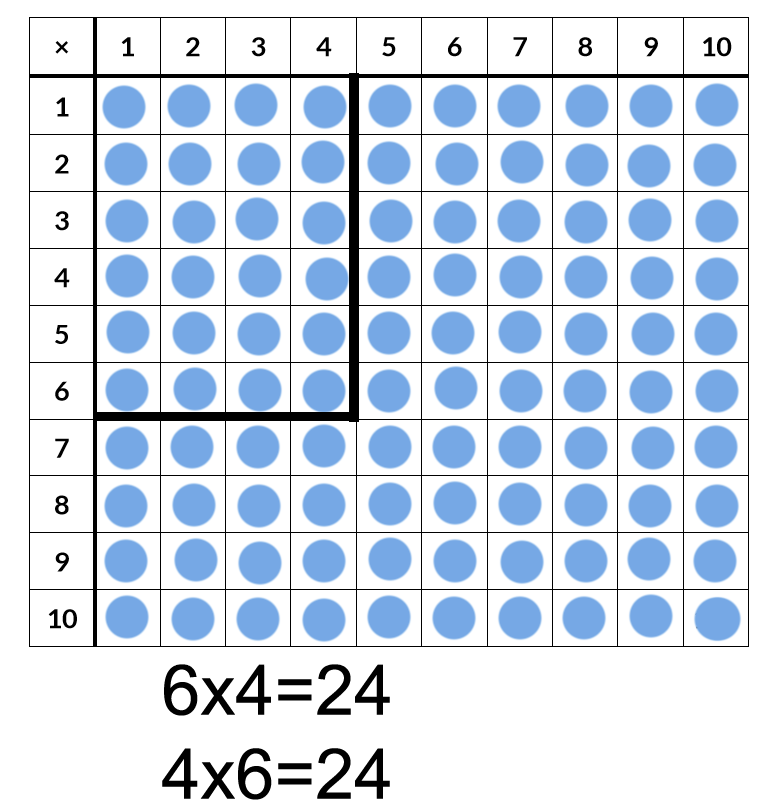
2. Practice solving problems
Once they clearly understand present the multiplication table with numbers. Have the students solve problems with the help of the table. As they solve the problems they will start remembering some of the answers. At the beginning ask them to color the area so that they remember that the same rule applies here as with the table above.
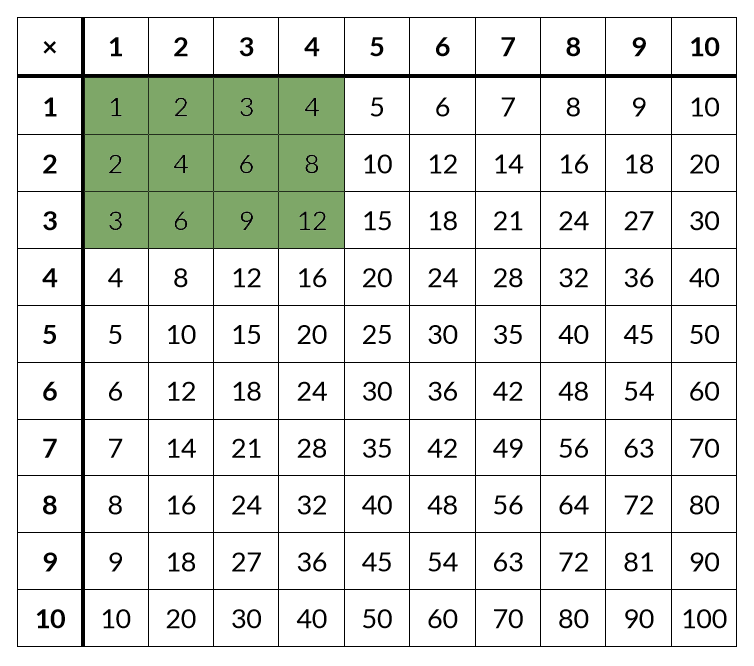
3. Find Patterns on the table
Ask Questions like:
Why do some numbers repeat on the table?
Find all the ways to make 12.
Find all the ways to make 15
Count by 3, 4 ,5, 6,….
Look at each row and column and find patterns. Why do the numbers follow that pattern?
You will be surprised by the number of patterns that students will find. These patterns will help them understand and remember.
4. Complete the missing numbers on the table.
This is a great way to show students that they can use “easier” facts as stepping stones to the harder facts.
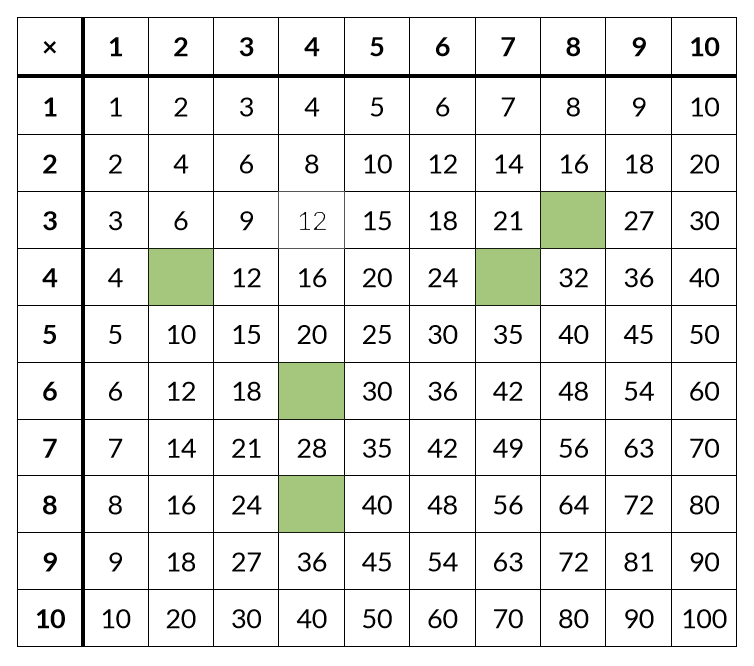
What is 4×6? if 3×6 is 18 then I can add one more 6.
5. Square numbers
Talk about these special numbers on the table. What makes them special? Color the area to see the squares. Students always remember the square numbers and they use them as stepping stones.
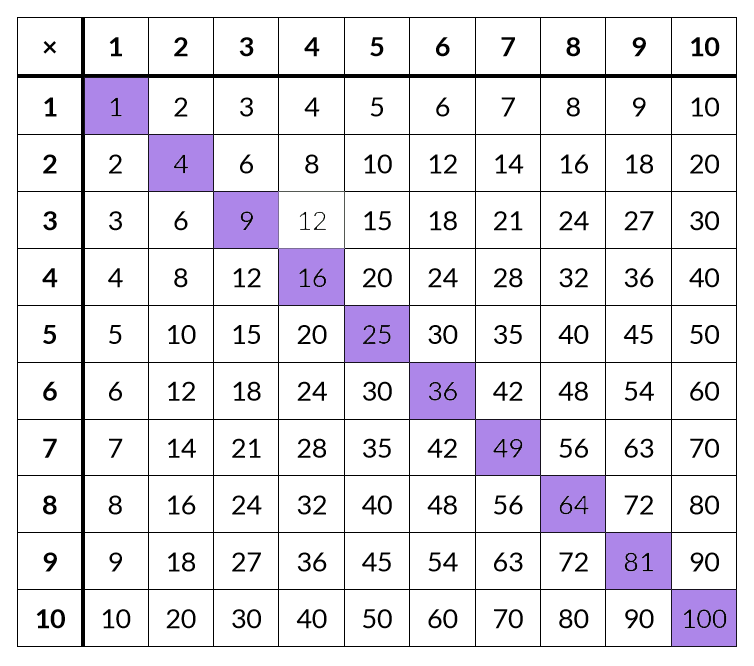
5. Play games
Have the students play games using the multiplication table.
Games like BLOCK IT! help the students get familiar with the table, find patterns and learn the multiplication facts.
Give groups or pairs a table with some missing numbers and see which team will fill in the numbers first. Some friendly competition always motivates students.
6. Practice each table on its own
Once students have had a lot of practice with the table you can start learning each table separately starting with the table of 2, 5, 10 which are the easier ones to remember. Make this a game that the child will enjoy and will want to repeat. This is a good time to ask the students to study each table and find patterns (if they haven’t found them already). Understanding these patterns, or “tricks” as students like to call them, will help them figure out the answer fast instead of trying to remember it. Eventually, fluency will come naturally.
Some examples
In the table of 3 the digits of the products add up to 3,6,9 following this pattern.

In the table of 5 the products alternate between products ending with 0 and products ending with 5. Why does that happen? Even numbers multiplied with 5 give half as many tens. Odd numbers multiplied by 5 give a product with 5 as the last digit. 7×5= (6×5)+5= 30+5=35
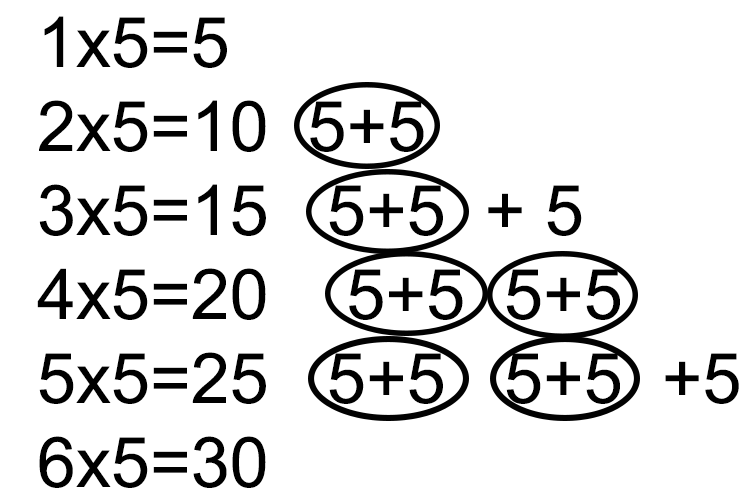
Students can relate the table of 4 to the table of 2. When you multiply a number x4 you can double it twice. All the products are even and it is like counting by 2 except starting with 4 and skipping one every time.
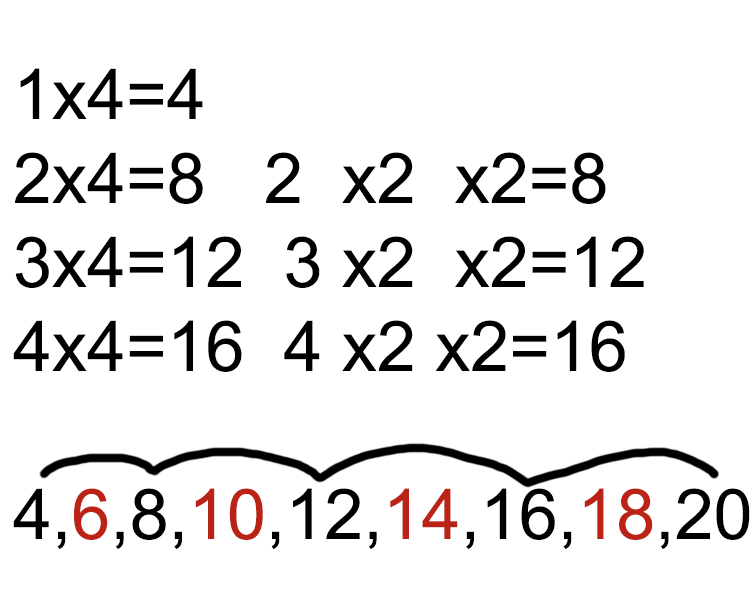
The table of 9 seems to be the most difficult to remember but is actually one of the easiest. Teach strategies that will help students understand.
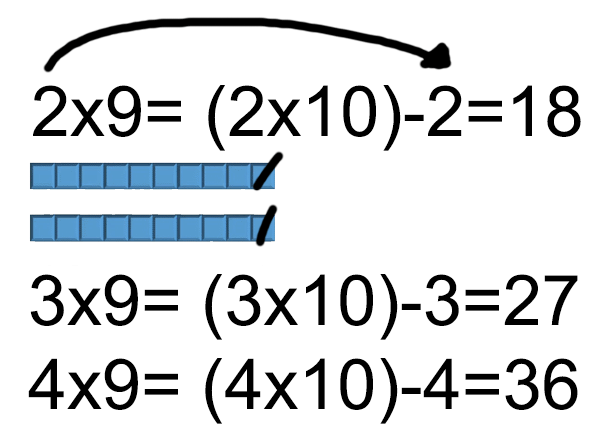
We all know that there are huge advantages to having fluency with multiplication facts. However, I think we need to be very careful about how we guide students towards learning and understanding them. Multiplication facts are a very interesting chapter in the math curriculum that deserves to be given time and attention. Time for students to discover, solve and learn. Promoting memorization without meaning could cause problems and push students to dislike math.
Here are some worksheets to practice the multiplication facts.
Here are some free to print (and digital) games to play with students to practice multiplication tables.
Block it! A great game for all students. The game board is the times table and the answers are right there! now with a digital form.
The great escape. Practice factors and multiples.
Maze Escape. Single-player challenge. Practice one table at a time.
Mini multiplication facts games Now with a digital form as well!
Thanks for visiting!
Please like and subscribe for more giveaways and updates.
Check out the rest of our free print to play games, task cards, worksheets, puzzles and more.

Check out our best selling games, now back in stock and available at amazon.com and amazon.ca

